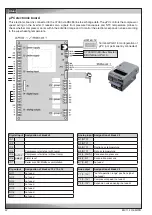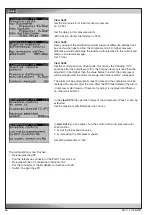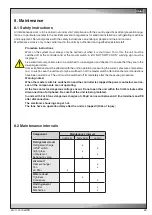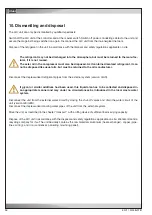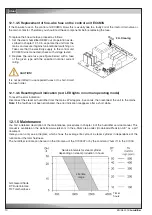
52
/11.2015/
G17D
EN
8.5 Water circuit
Tightness
Check the water circuit visually for tightness. Beyond that a level indication at the storage tank, if existant, can give
information about changes of the water quantity. A lack of water in the circuit is replaced by air, which reduces the
heat capacity of the chilled water circuit and is detrimental to the pump.
Condenser (only at GE, GES)
Check the water side pollution of the plate condenser by comparing the cooling water inlet temperature to the outlet
temperature. If the difference is less than 3 K, it indicates a limited heat transmission and thus pollution.
Another possibility to verify this consists in the comparison of the outlet temperature with the medium condensation
temperature (by measuring the condensation pressure at the high pressure side of the compressor). If this difference
exceeds 7 K, the condenser is probably polluted.
In this case the condenser has to be cleaned chemically.
8.6 Unit in general
Electrics
Check the connection terminals for tight fixation when the unit is installed and once again after an operation time of
30 days.
Mechanics
Clean the unit's inside with a vacuum cleaner. Clean pipes simplify the search for leaks. Check the pipes, the com-
pressor and the condenser for a tight seat. Vibrations of pipes and circuit components can result in leaks. Check also
the insulation of the water piping. Condensing air humidity on cold water pipes means a loss of cooling capacity.
8.7 Competences
Repairs on the refrigerant circuit
(tightness, filter drier exchange)
Trained refrigeration technician
Repairs on the main components of the refrigerant circuit
(compressor, expansion valve, condenser, evaporator)
Stulz service technician
Repairs on the water circuit (tightness)
Trained service technician
Repairs on the electrics
Trained electrician





